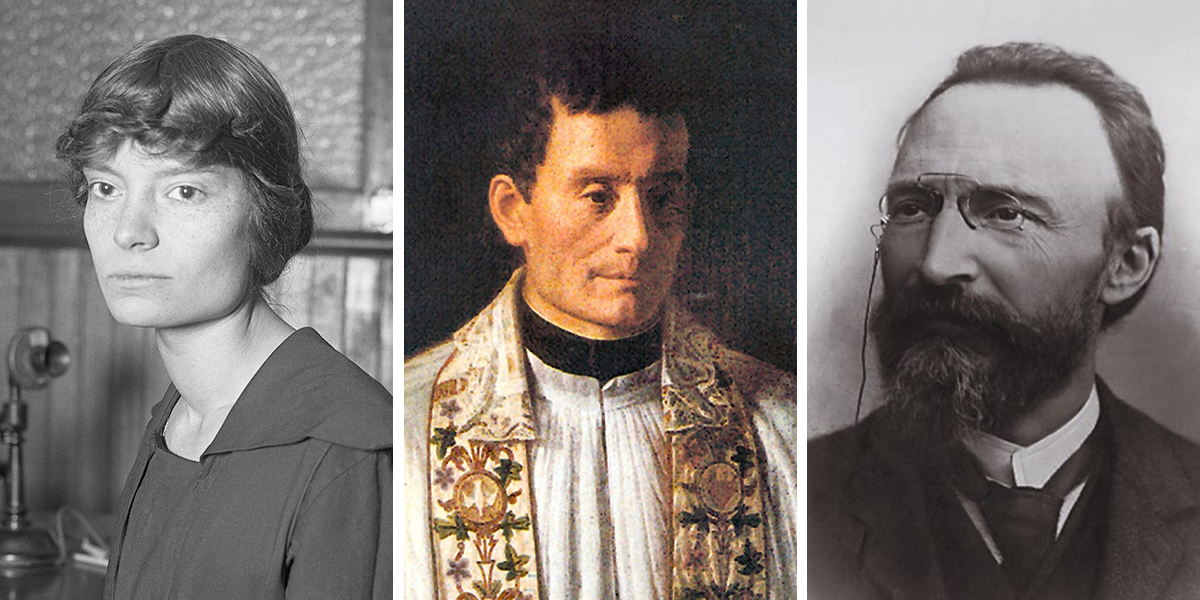
There has long been a stigma surrounding mental illness, particularly among those Christians who insist that depression is a sign of faithlessness, rather than the result of mental illness, physiological conditions, or past trauma. Some have viewed suicide in particular as irremediably sinful, a final act of despair. Such beliefs are both untrue and dangerous, causing those who are suffering to refuse necessary treatment (such as counseling or medication) and even to conceal their struggles, ashamed at their purported weakness. The Catechism of the Catholic Church, while reiterating that our lives are not our own to dispose of, and suicide is “gravely contrary to the just love of self,” also states, “Grave psychological disturbances, anguish, or grave fear of hardship, suffering, or torture can diminish the responsibility of the one committing suicide” (paragraph 2282) and goes on to explain that the Church prays for those who have taken their lives, knowing that God’s mercy is boundless.
To underscore the truth that mental illness isn’t a sign of spiritual weakness, the Church has saints who lived with mental illness, saints who went to therapy and took medication, and even saints who struggled against suicidal ideations. Some (like St. Elizabeth Ann Seton) were tempted to suicide long before their conversion and later found healing. Others (like St. Ignatius Loyola) found that their mental health worsened after their conversion. In Ignatius’ case, scruples convinced him that there was no hope for him; it was only fear of offending God that kept him from throwing himself from a window. Still others (like St. Mary Magdalen dei Pazzi) fought for years against a desire to end their lives. These saints remind us that mental illness is not the result of an inadequate prayer life or a failure to trust God, and that despair is not a sin when it’s the result of mental illness (or when it’s a temptation that we struggle mightily against).
Venerable Francis Mary Paul Libermann (1804-1852) was raised in an Orthodox Jewish family and expected to follow in his father’s footsteps as Chief Rabbi of Saverne, Frace; when Francis became Catholic as a young adult, his father mourned him as though he had died. Timid and sensitive from his youth, Francis became plagued by anxiety as an adult, particularly because of the epilepsy which prevented his ordination for 15 years. Worst of all were his suicidal ideations, which made every crossing of a bridge a terrible ordeal as he fought against his inclination to throw himself off (an impulse often experienced by people with obsessive-compulsive disorder as well as those struggling with depression).
Francis continued to cling to Jesus, but while his epilepsy was ultimately healed, he continued to be tempted to suicide, even as a priest, the founder of a religious order, and a sought-after spiritual director whose suffering made him profoundly sympathetic. Bridges were a constant source of worry and he never kept a knife nearby, fearful that at the moments of deepest despondency he might not have the strength to resist. In and through all this, God made him a saint, a man who was able to hold on to hope despite his constant temptation to despair.
Blessed Bartolo Longo (1841-1926) was raised praying the Rosary but was eager to live the college experience fully, which at the time meant anti-clericalism, atheism, and ultimately the occult. Before long he was “ordained” a priest of Satan. Through the intercession of his deceased father, Bartolo finally returned to God. Still, he felt unworthy of mercy, certain that he was permanently marred by his sin, still consecrated to Satan and destined for hell. Looking back on this time, he later wrote, “As I pondered over my condition, I experienced a deep sense of despair and almost committed suicide.” In that moment, Bartolo felt Our Lady tell him that his path to heaven was through teaching others to pray the Rosary. This mission gave him hope in a moment of despair. For more than 50 years, Bartolo preached the Rosary, founded schools for the poor, and established orphanages for the children of criminals.
Blessed Benedetta Bianchi Porro (1936-1964) began to lose her hearing as a medical student, but doctors believed it was psychosomatic. It was Benedetta who diagnosed herself with von Recklinghausen’s disease, a neurological condition that would ultimately rob her of all five of her senses and leave her paralyzed, able to move only one hand. Her suffering threatened to plunge her into despair, leading Benedetta to write to a friend (from her seventh-floor apartment), “There are times that I would like to throw myself out the window.” But she was supported by a community that knew the value of her life, and she was strengthened by the love of Jesus. In the end, Benedetta was able to write, “I do not lack hope. I know that at the end of the road, Jesus is waiting for me … My days are not easy. They are hard. But sweet because Jesus is with me.”
Servant of God Dorothy Day (1897-1980) was a single mother whose radical yes to God changed the lives (and eternities) of thousands of people. In her autobiography, Dorothy suggests that in her youth her series of sexual partners, her abortion, and her suicide attempts were evidence of her heart’s frustrated longing for God. After the birth of her daughter, Dorothy began attending Mass and decided to have her child baptized, decisions that ultimately led to her separation from her common-law husband. Dorothy began to see her service to the poor as a service to Christ. With Peter Maurin, she founded the Catholic Worker movement, published a newspaper, fought for workers’ rights, and lived in community with the poor. A powerful activist who was several times arrested and even shot at for her work against war and oppression, Dorothy found her strength in daily Mass and a commitment to contemplative prayer.








